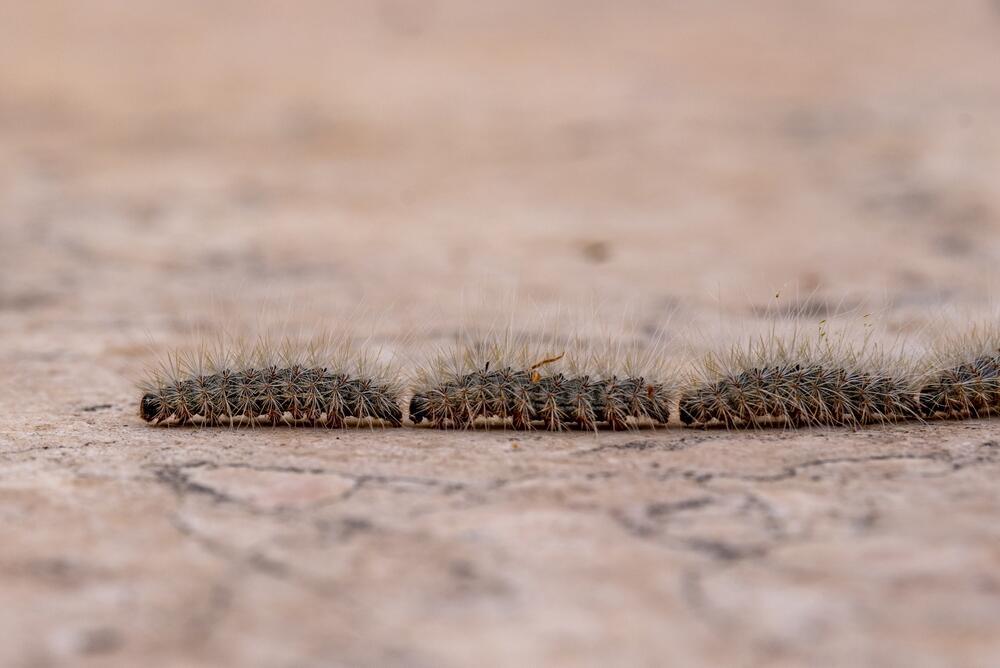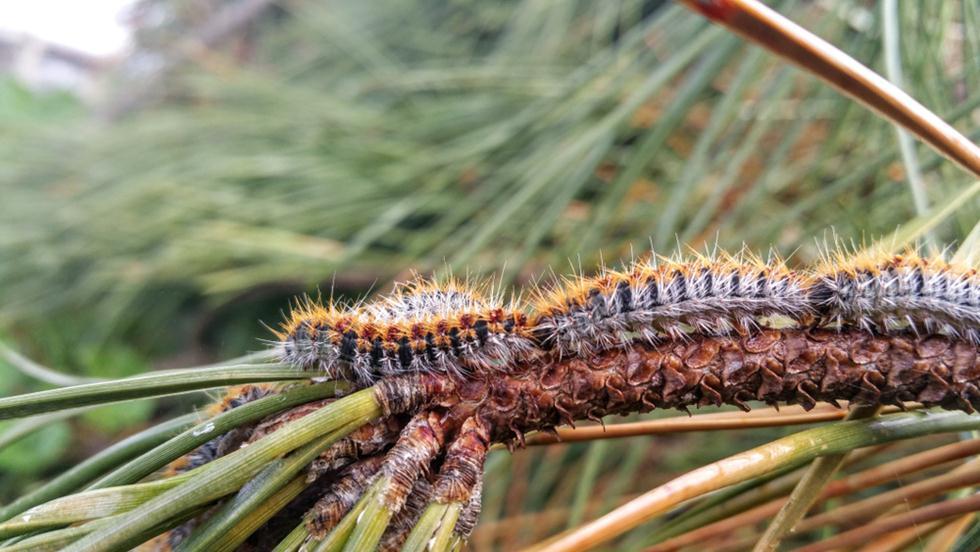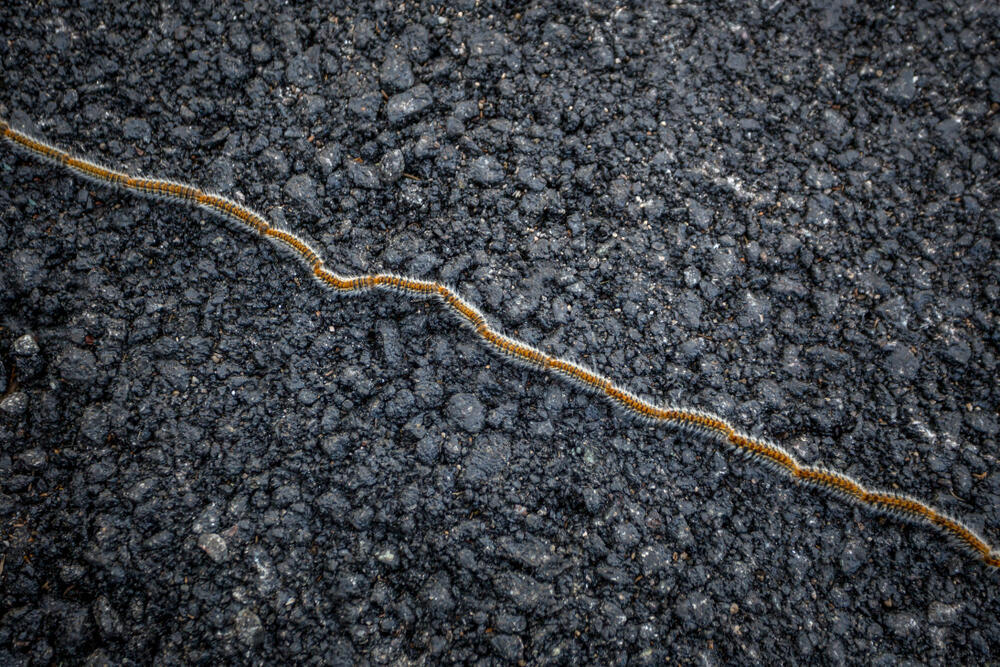The pine processionary is known for processions that resemble trains of caterpillars, linked and moving in a long chain after descending from the pine trees that serve as their home. Such a procession was observed in Lahav Forest last weekend, but this one was exceptionally long. Be warned, under no circumstances should you touch the pine processionary.
Pine processionary parade
(Video: Yom Tov Aharoni)
Oz Rittner, collection manager of the mollusks and butterflies collections at the Steinhardt Museum of Natural History at Tel Aviv University, explained why these impressive processions are formed, like the one documented.
"The pine processionary caterpillar uses a pheromone and it can identify whether the substance was secreted recently or a while ago. The pine processionary prefers to follow a fresher scent, so the famous procession occurs when everyone follows the pheromone," he said.
Rittner added that the pine processionary also uses its stretched hairs or bristles to connect in a chain to other individuals. "The number of caterpillars in the procession is not fixed, as such a procession can range from a few individuals to hundreds," he said. "When there is a stronger stamp of the pheromone and traces of hair, the number of caterpillars in the procession will increase."
The pine processionary (Thaumetopoea pityocampa) is a moth of the subfamily Thaumetopoeinae in the family Notodontidae, known for the irritating hairs of its caterpillars, their processions, and the economic damage they cause in coniferous forests.
The species is native to the southern Mediterranean area, North Africa, the Middle East, and southern Europe. It has been spreading northwards since the 1990s, assisted by climate change and by commercial activities including planting of host trees and transportation, and has reached Brittany, forests to the north of Paris, and Strasbourg in northern France.
"For many years, JNF personnel have been invested in biological control to minimize the damage caused by these caterpillars to pine trees and to minimize as much as possible the damage to hikers or animals that may touch or ingest them," said Rittner. He added that due to global warming and Israel's location in a hotter region than other areas in Europe, the pine processionary caterpillar appeared earlier than expected.
Danger! Do not touch
The Keren Kayemeth LeIsrael advises visitors to beware of the harm caused by the pine processionary. When visiting the forest, one should avoid contact with the caterpillars which may be found on tree trunks and the ground. The KKL is making a noticeable effort to minimize damage but the caterpillars are found in most pine forests in the country.
Therefore, they advise staying away from areas that are considered the pine processionary's habitat. If you feel irritation on the skin or in the eyes after visiting pine forests, consult a doctor and inform them of exposure to pine processionary.






